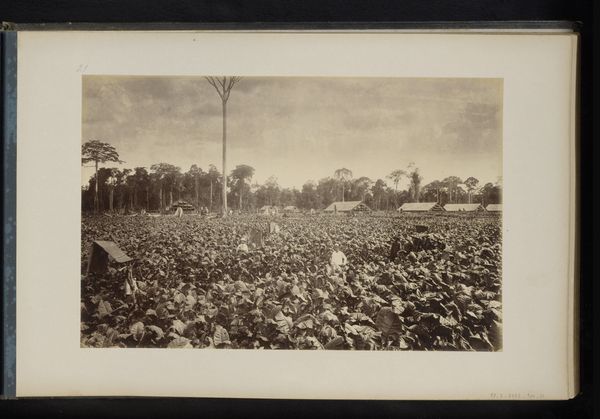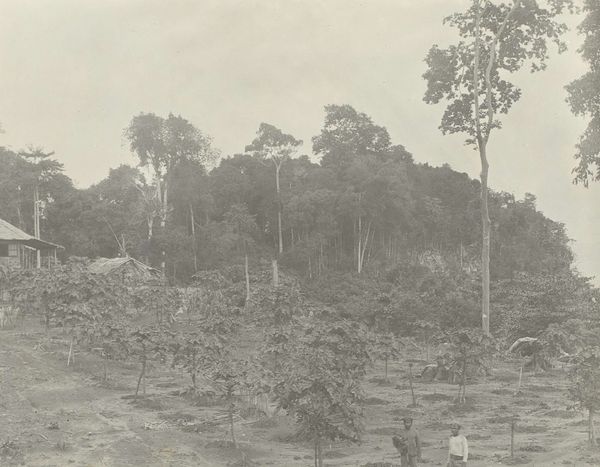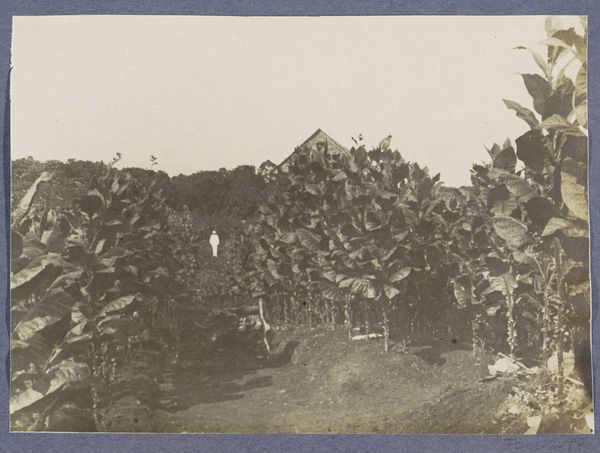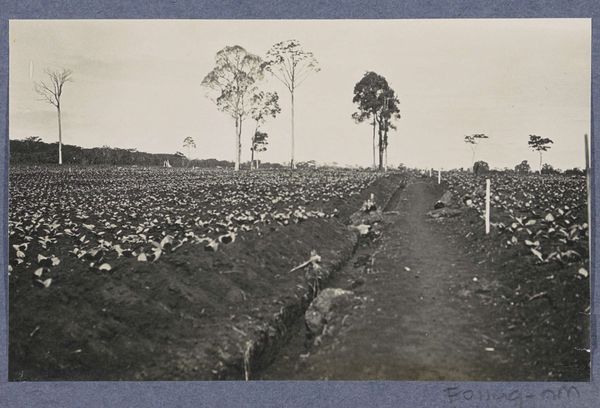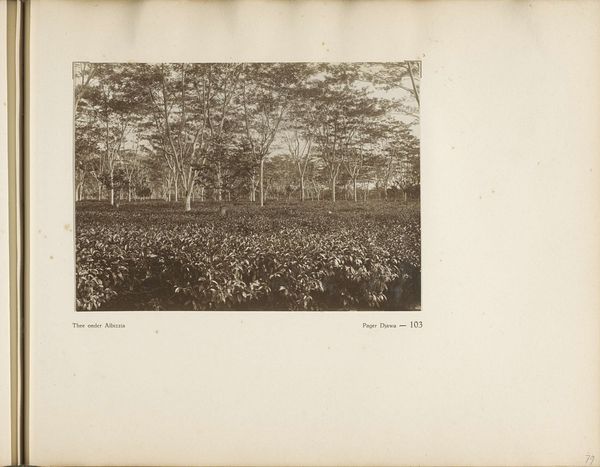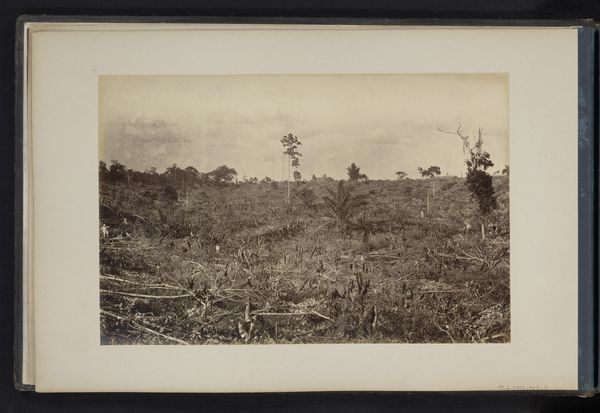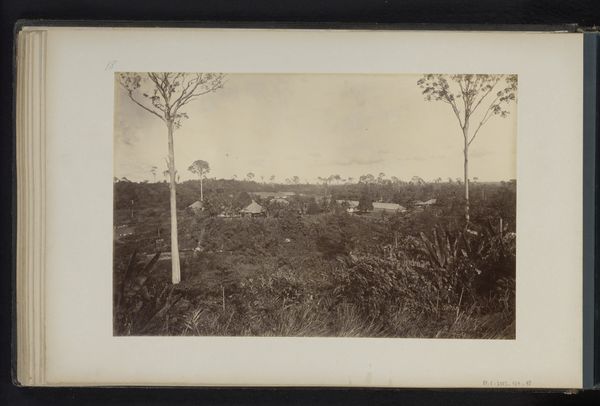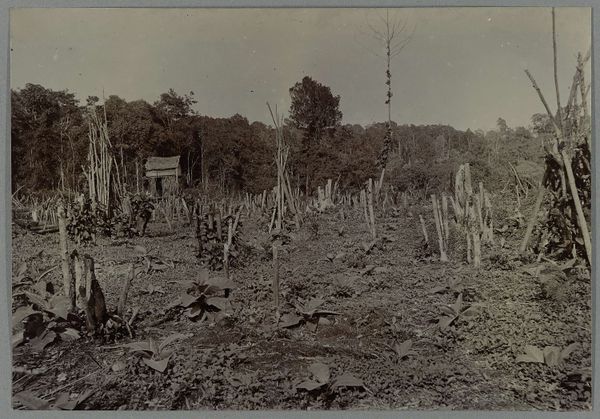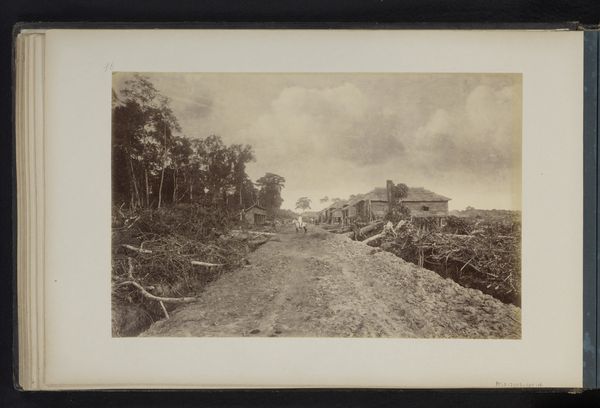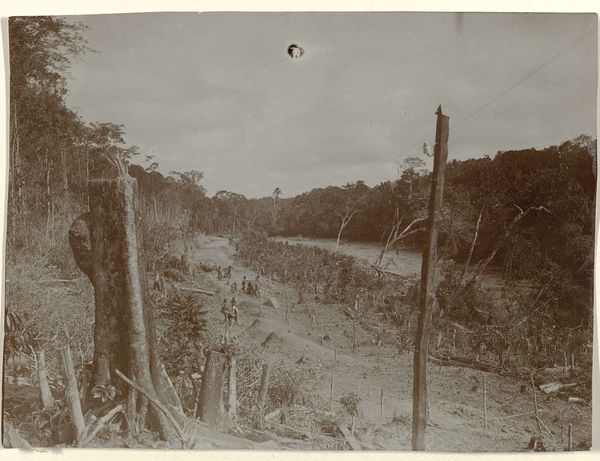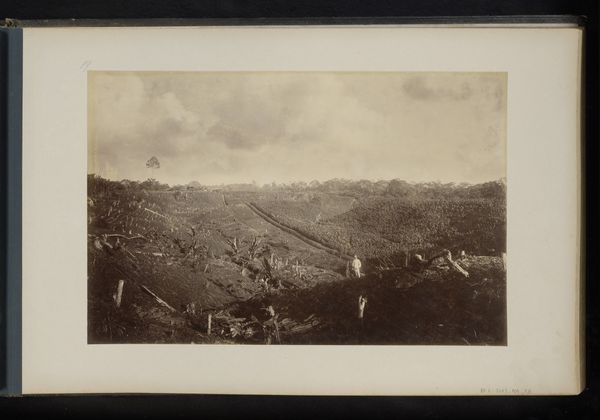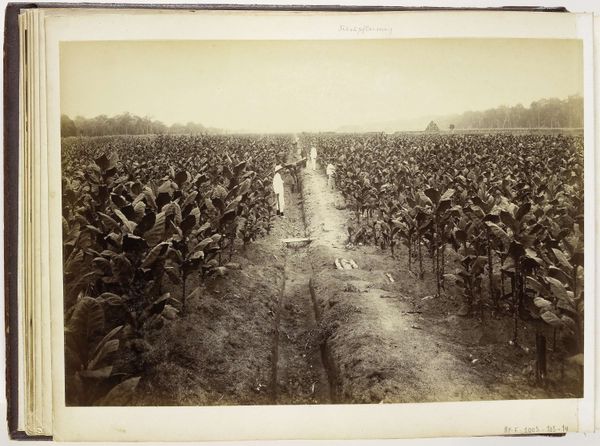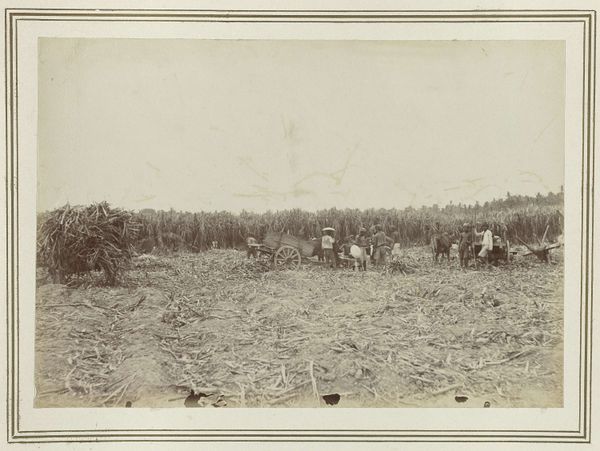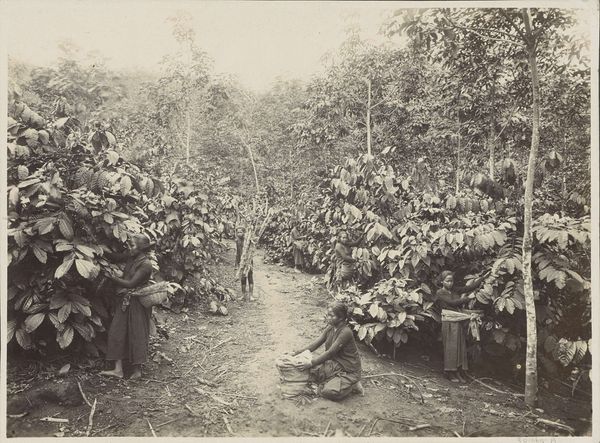
#
ink painting
#
pencil sketch
#
charcoal drawing
#
possibly oil pastel
#
charcoal art
#
underpainting
#
watercolour bleed
#
watercolour illustration
#
pencil art
#
watercolor
Dimensions: height 227 mm, width 322 mm
Copyright: Rijks Museum: Open Domain
Curator: The albumen print we’re viewing, titled "Gezicht op de tabaksplantage Glen Bervie, Langkat Sumatra," presents a vista of a tobacco plantation, dating back to around 1900. It’s held in the collection of the Rijksmuseum. Editor: My initial impression is one of oppressive, almost stifling labor. The density of the plants in the foreground, contrasted with the deforested landscape behind it speaks to that tension, doesn't it? Curator: It certainly does. The composition echoes the visual rhetoric of colonial power. The trees standing sentinel in the background against that field can be seen as symbols of disrupted natural order. The forced conversion of land, and the disruption to the Indigenous societies. Editor: Absolutely. I am particularly interested in what an albumen print, and its relative accessibility for mass reproduction, does for the dissemination of this colonial vision of agricultural "progress." We often overlook the means of production involved, forgetting the skilled labor and the chemical processes necessary to even create such a seemingly straightforward document. Curator: I find it fascinating to consider the intended audience. Who were these images for? Investors? The colonizers wanting to validate their success? Editor: Good question. Perhaps a bit of both, and more. It’s crucial to think about who had the means to acquire these images and what purpose they served in shaping perceptions of empire and its supposed benefits, both for the colonizers and the colonized, no? Curator: I agree. The photograph normalizes a specific world-view by portraying the tobacco plants – agents of consumption– triumphant, as a symbol of civilization. What do you make of that stark contrast between foreground and background? Editor: It’s visually arresting. I’d suggest it’s almost a deliberate act, presenting an immediate reality of the lush tobacco contrasted to an encroaching backdrop, where raw materials become the basis for imperial advancement and global exchange, regardless of its cost. Curator: Indeed. Examining "Gezicht op de tabaksplantage Glen Bervie" lets us contemplate more than just what's visibly displayed in a vintage photo, it gives an impression of power relations in action, which still affect current global economy. Editor: Precisely. It invites a much more in-depth analysis into labor, power, and visual rhetoric. It is important to examine that in such images because, let's be real, this photo is a clear depiction of our present situation and is likely to reflect what we are likely to leave behind.
Comments
No comments
Be the first to comment and join the conversation on the ultimate creative platform.
